Home » Other Articles » Tuesday Treasures Index » Tuesday Treasures - July 2023 - Tuesday Treasures - July 2023
Tuesday Treasures - July 2023
TUESDAY 25 JULY
Midland & South Western Junction Railway
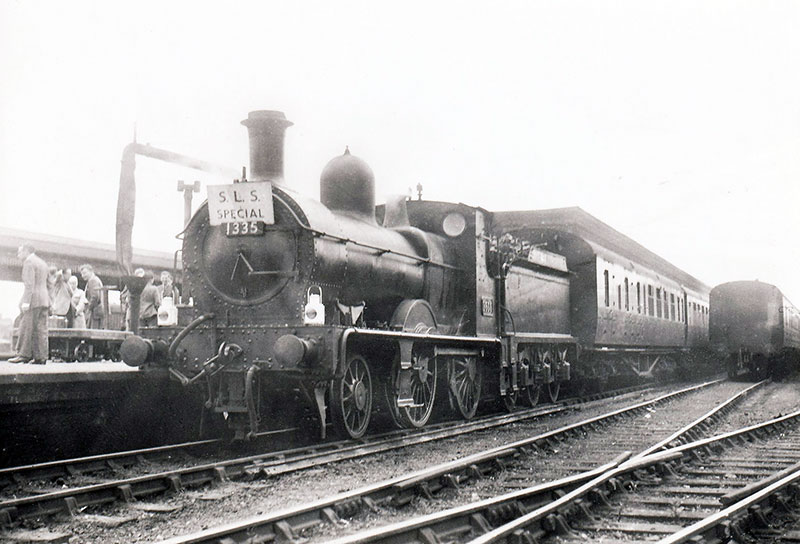
GWR 2-4-0 locomotive No 1335 was originally M&SWJR No 11, built by Dübs & Co in 1894. This photograph was taken on 31 August 1952 and shows the locomotive about to depart from Oxford with a Stephenson Locomotive Society railtour to Shipston-on-Stour. No 1335 was withdrawn the next month
The M&SWJR was formed in 1884 through the amalgamation of the Swindon, Marlborough and Andover Railway and the Swindon and Cheltenham Extension Railway. The route ran from Andover in Hampshire to Andoversford Junction on the Banbury and Cheltenham Direct line. The original aim of the promoters was for a more direct route from the Midlands to the docks at Southampton but due to financial difficulties during construction, the line was tortuous and journey times long. It became part of the GWR under the Railways Act of 1921 at which point the Great Western inherited an eclectic mix of locomotives and rolling stock. We show three examples of the locomotive here.
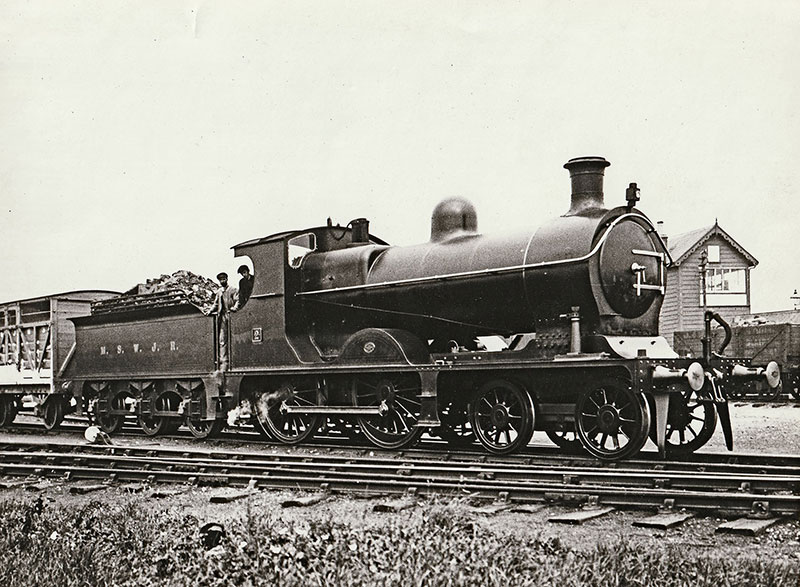
M&SWJR 4-4-0 locomotive No 2 was built by the North British Locomotive Co in April 1909. She became GWR No 1120 and was withdrawn in August 1931
Like many others, the line was never a great commercial success but came into its own during times of international conflict. At the southern end the garrison camp at Tidworth was greatly expanded during the South African Wars and during the First and Second World Wars the line conveyed large volumes of military traffic. In peacetime however it reverted to its usual sleepy nature. The route passed through sparsely populated areas and was losing large sums of money for the publicly owned British Railways. Eventually the end came when passenger services ceased on 9 September 1961 and the line was closed as a through route.
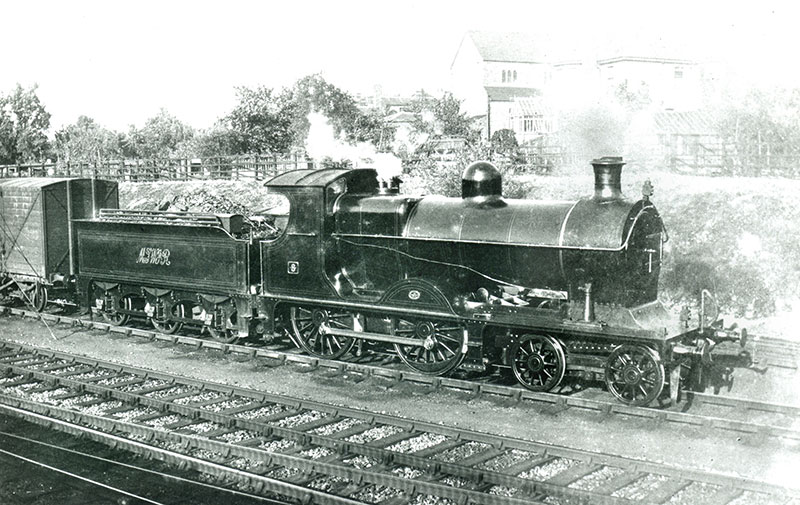
M&SWJR 4-4-0 locomotive No 8 was built by the North British Locomotive Co in April 1912. This photograph shows the tender carrying the MSWJR initials in an elaborate scroll. She became GWR No 1126 and was withdrawn in December 1938

The Great Western Trust’s treasures include this extremely rare guard’s handlamp stamped with the M&SWJR initials
The striking poster by James Fox dates from 1909 and is a ‘stock’ poster issued by the Isle of Wight Railway and the Isle of Wight Central Railway to which the M&SWJR have added their banner. The imprint on the bottom right puts the poster as one of the Dorland series. This was an advertising agency founded by John M Dorland in the USA in 1885, which opened a London office in 1905.
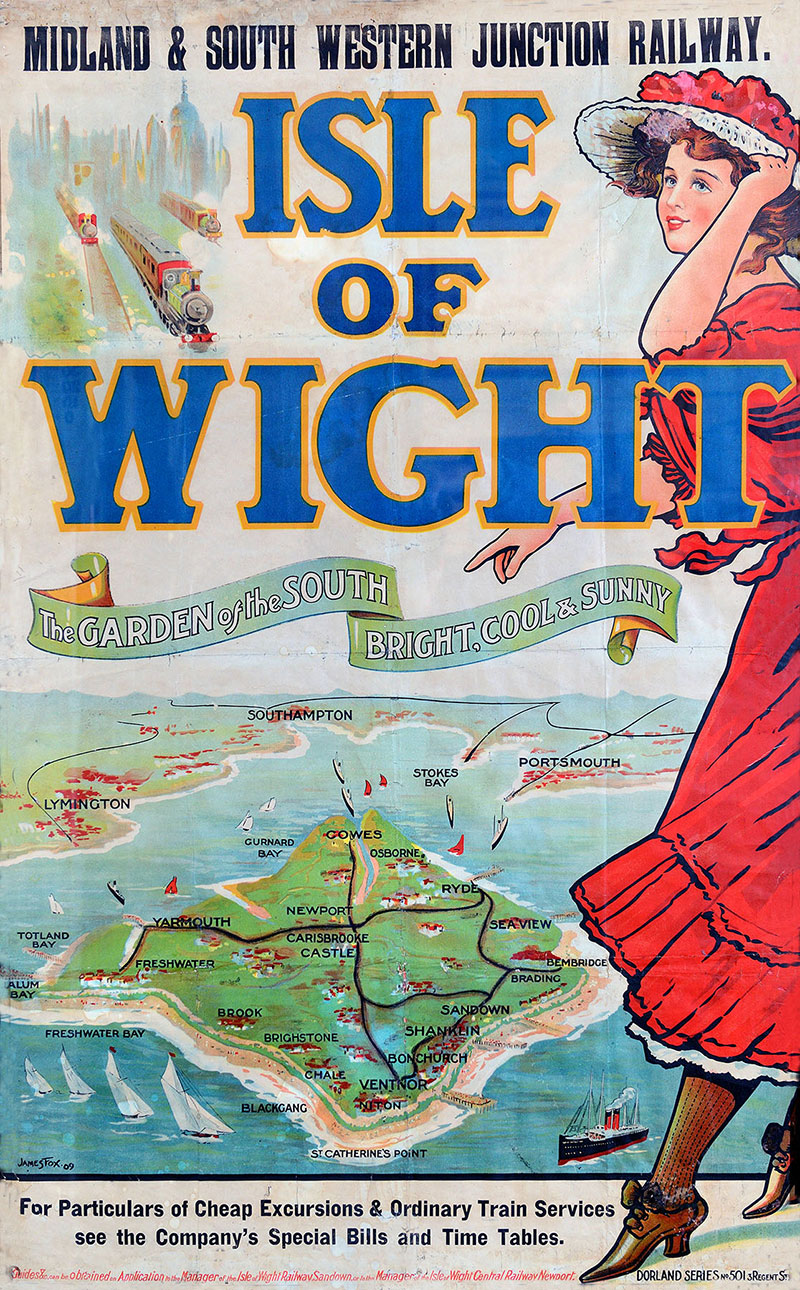
The original Isle of Wight poster in the Great Western Trust archive
The whole image is delightful and features an aerial view of the Island together with an attractive young Edwardian lady showing slightly more stocking than would have been permitted in Victorian times. It is certainly designed to catch the eye of the male of the household whose responsibility it would have been to arrange annual holidays.
A copy of the poster is displayed on the pagoda waiting room on Didcot Halt and this photograph of a model in a complementary pose was taken during a Timeline Events photo charter in October 2021.
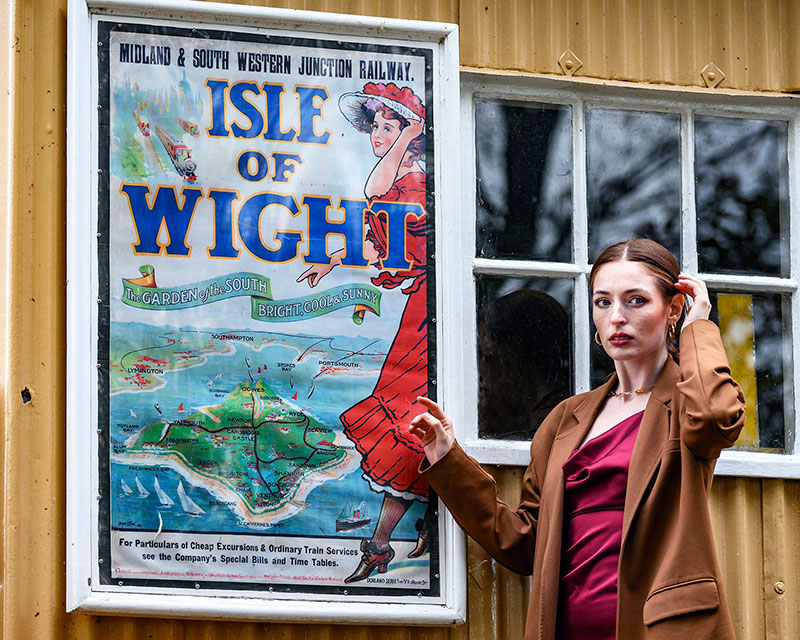
The print of the Isle of Wight poster on Didcot Halt
All the images shown here are from the Great Western Trust collection.
TUESDAY 18 JULY
Enticing the Europeans – Part 1
In our recent Blogs based upon the Great Western Trust collection at Didcot Railway Centre, we have had a number based upon the ‘Enticing the Americans’ series, so today we thought we would offer a balancing example of the same theme but towards our European neighbours.
We have plenty of material, both GWR and BR, but we begin with BR.
We illustrate just two of a set of four pamphlets that prove, if it was needed, that BR carried on the tradition of its private Big 4 predecessors, to attract tourists to its UK services from all corners of the globe, but sensibly, nearer our shores as it were.
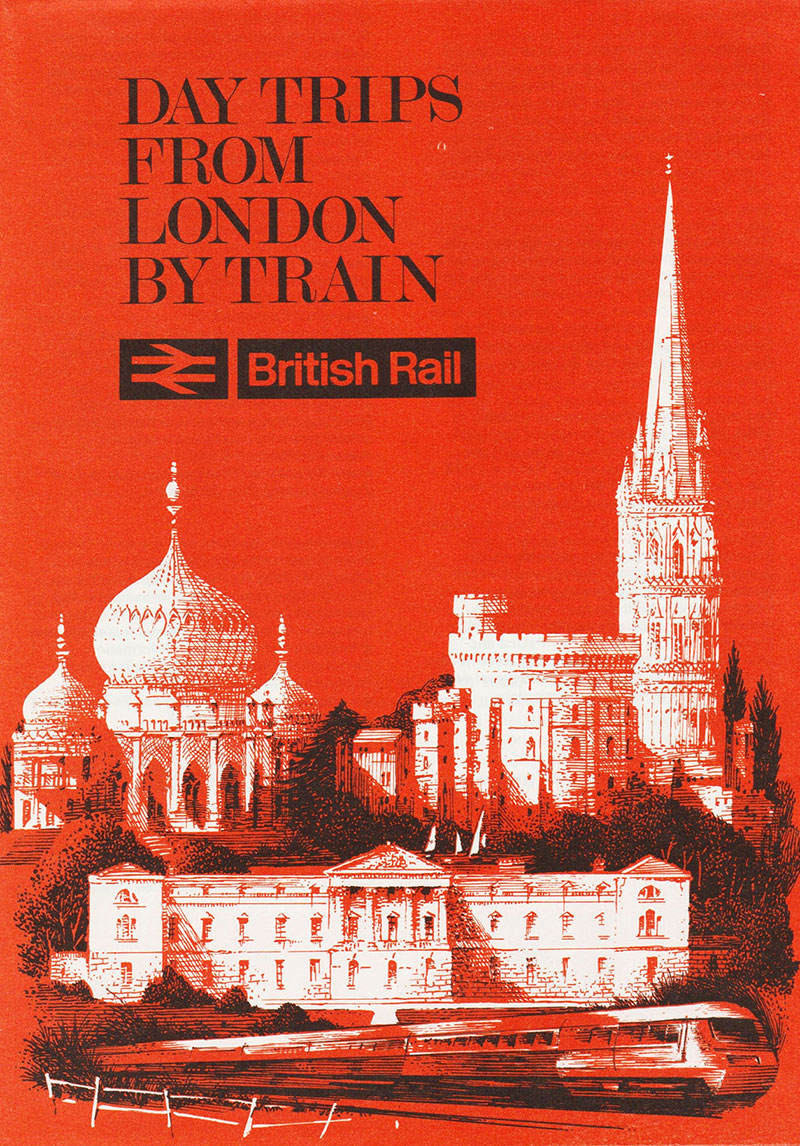
That effort is wonderfully informed by the two of those pamphlets, with identical artistry but of varied colours and of course, varied languages. English in Orange and Dutch in Blue. In fact of the set of 4 produced, a German one was in Purple and that in French was Green.
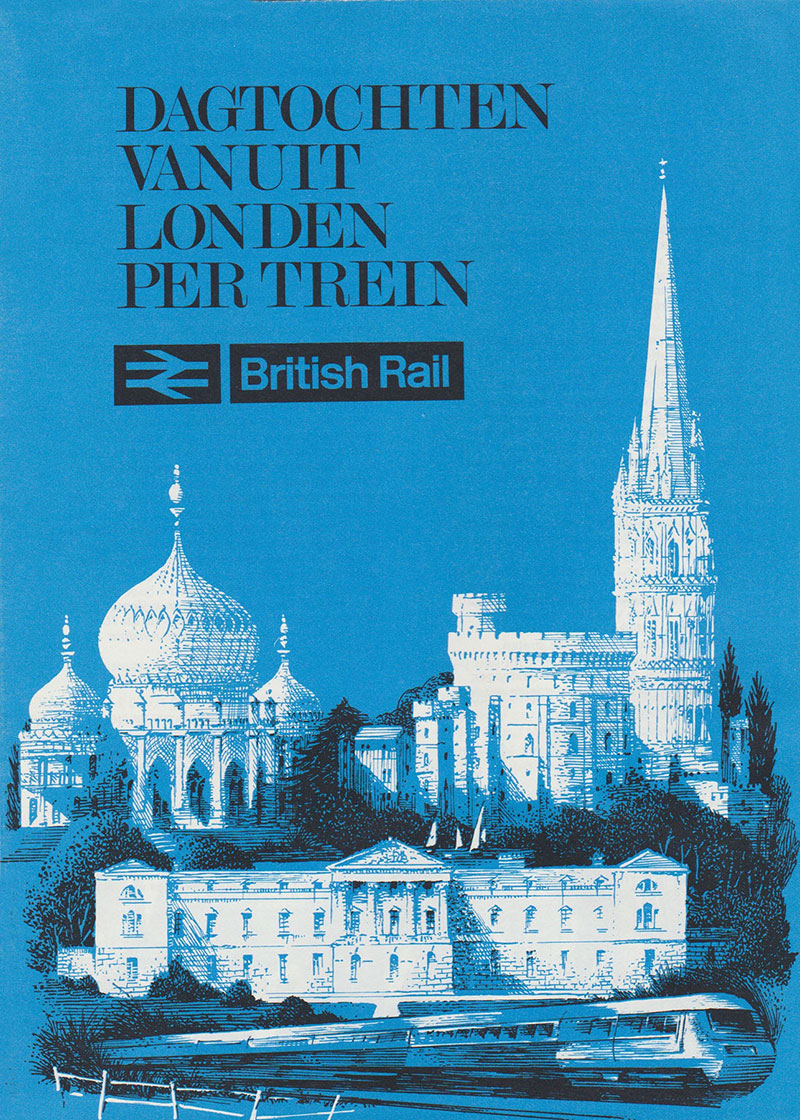
The pamphlets opened to a large format including a UK system map, Map of the Underground, an extensive list of the sights to see and visit and London Railway Stations.
For us however, the eye catching iconography on the covers is the HST, which by all assessments, truly gave BR a service and a reputation it had long struggled to gain before they were introduced. Of course, we cannot let it be overlooked that they were first introduced on the Western Region and were used in media capturing speed exploits that themselves we will cover in future Blogs.
TUESDAY 11 JULY
Delivering the Goods – Part 4
With such a vast expanse of the types of Goods Traffic that the railway companies, and then British Railways, had to offer as ‘Common Carriers’, at previously published rates of charges, this occasional series in our Blogs, will drop in suitable examples from time to time.
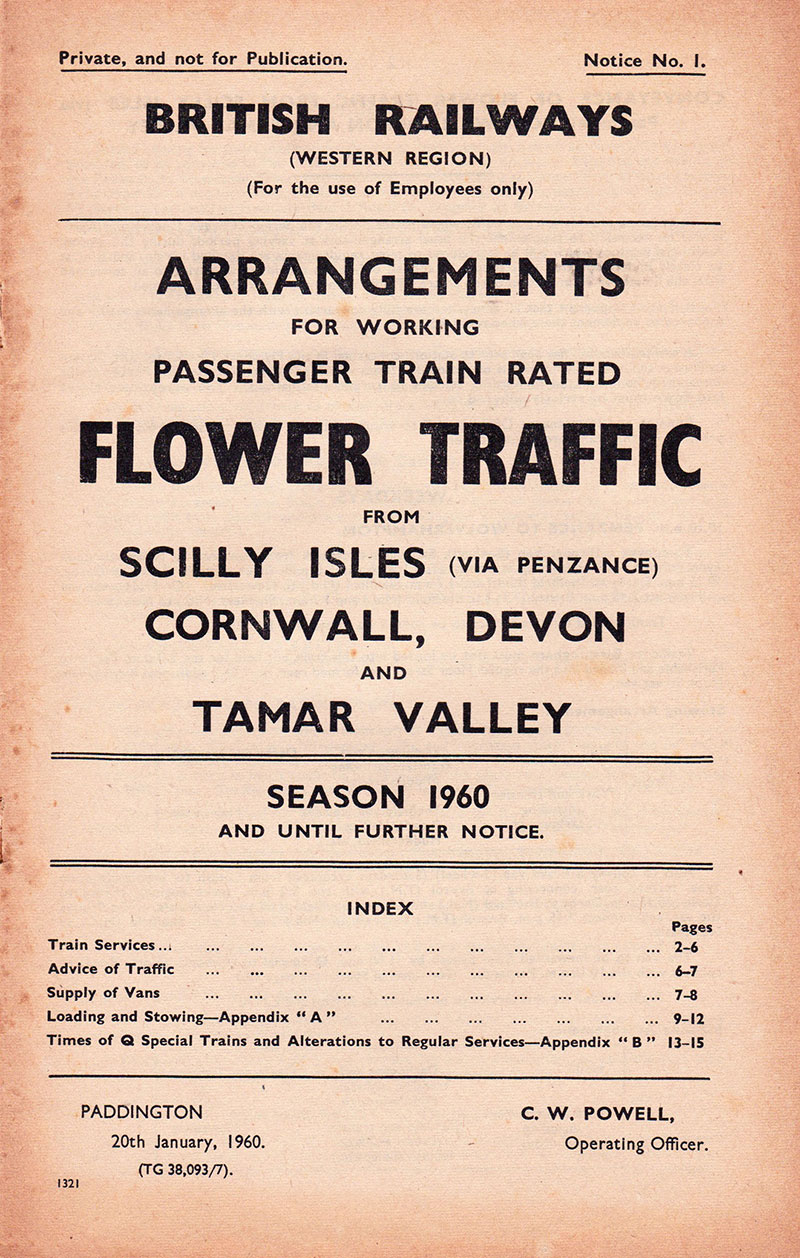
Today, from our Great Western Trust collection we highlight a now completely lost annual, seasonal railway traffic, that of flowers.
Illustrated is the cover of the BRWR Notice No1 of arrangements for this traffic from the Scilly Isles (via Penzance), Cornwall, Devon and Tamar Valley during the 1960 season. With apologies to the folk of the Isles of Scilly for the wording, but we are merely accurately quoting the internal BR document.
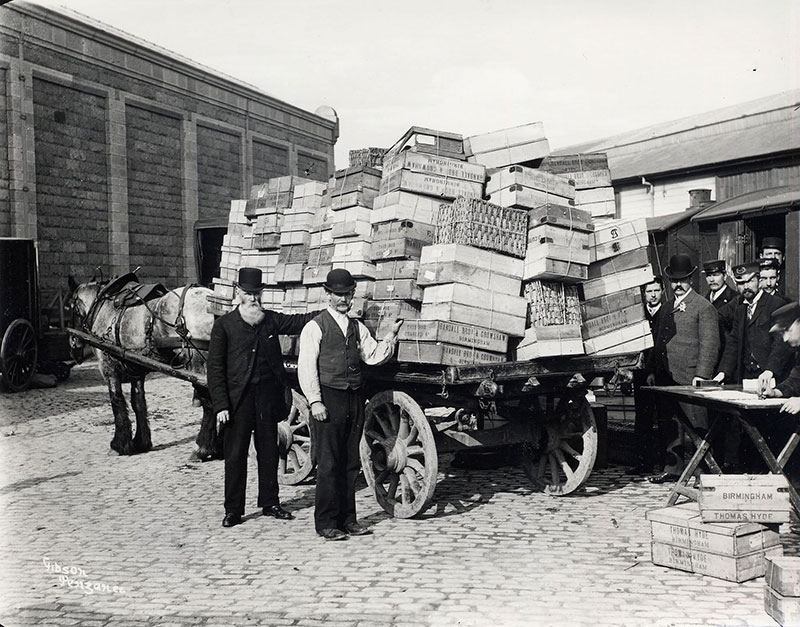
Loading a special flower train at Penzance in 1899. Photograph by Gibson’s, Penlee House Gallery & Museum, Penzance
Some 15 pages of detailed train working were necessary for the many station and traffic department staff to apply. That said, the traffic was so long established in the working calendar, and so vast, important and seasonal that we believe that the staff knew the scheme by memory, very much as was the case for regular freight traffic of all kinds. New recruits were brought into that corporate body ‘memory’ as each season’s traffic flows ebbed and flowed, and became a norm.
Naturally, these specific instructions on Flower Traffic, meant that speed of action and delivery was essential, hence the best engines and dedicated crews were employed for express routing and operation, hence why the notice itself highlights that these ‘Flowers’ were to be conducted as ‘Passenger Rated Traffic’, that is at express train conditions.
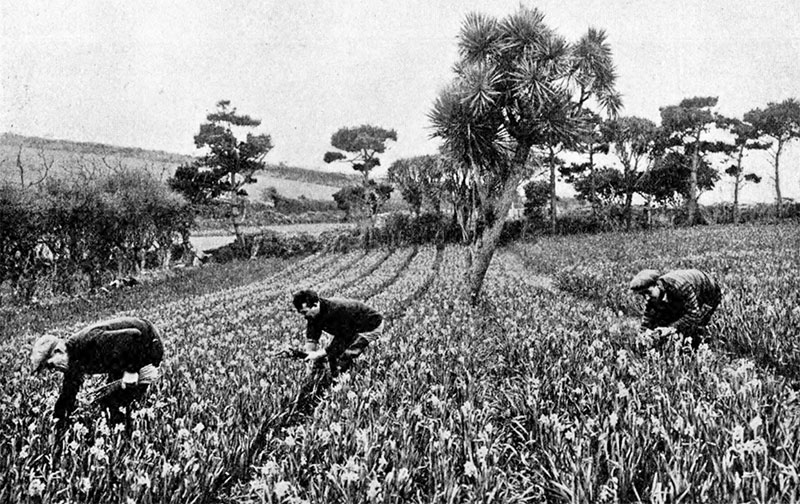
Busy in a field of narcissi in the Isles of Scilly. Photograph published in GWR Magazine April 1938
That traffic flow was very diverse, including destinations as far away as York, Manchester and Wolverhampton, as well as London of course. That meant the need for very organised traffic exchange between the then BR Regions. Overall, quite an annual undertaking for the entire BR system.
Looking at the flower traffic even farther back in time, we find that in 1893 the daffodil growers of the Isles of Scilly complained to the GWR about the speed of the mail trains carrying their flowers to Covent Garden market in London. Flowers were packed for the Monday and Thursday ferries to the mainland. By 28 February 1893, during that month 182 tons of daffodils had been taken by train to London, part of that year’s crop of over 400 tons. But the growers were unhappy at the average speed of 28½ miles per hour of the mail trains and complained that the journey was 30 minutes slower than the previous year.
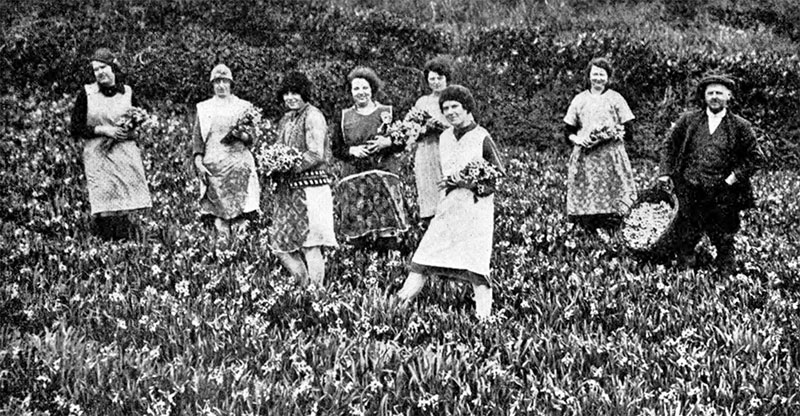
A pause for a moment in spring flower harvesting near Penzance. Photograph published in GWR Magazine April 1938
Could an explanation have been that in 1892 the flowers would have travelled to London on the broad gauge, which had been narrowed by 1893? In the year 1896, 514 tons of flowers were carried.
In April 1899, the GWR reported that between January and Easter it was running up to three ‘Flower Specials’ a day between Penzance and Paddington. Flowers from the Scilly Isles and Penzance area were packed in wooden boxes and sent in six-van specials for Covent Garden. The specials had precedence over cattle, goods, minerals and stopping passenger trains. The journey time was about eleven hours.
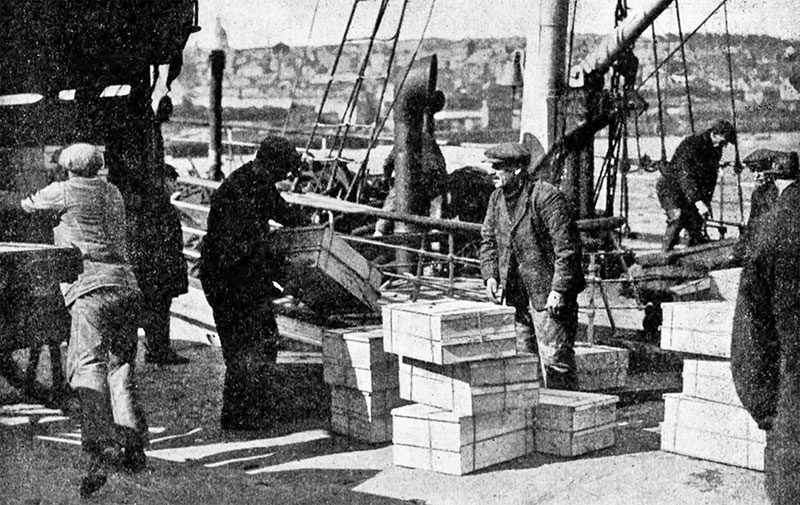
Unloading boxes of flowers from the ‘Scillonian’ at Penzance. Photograph published in GWR Magazine April 1938
In 1936 the GWR reported the Scilly Islands flower traffic broke a record with 289,583 boxes being conveyed. This amounted to over 1,000 tons in a season from the islands. For a brief period in 1943 carriage of flowers by rail was forbidden, to assist the war effort, but the morale-boosting effect of flowers meant this order was soon rescinded. After the war the flower traffic from the West Country bounced back.
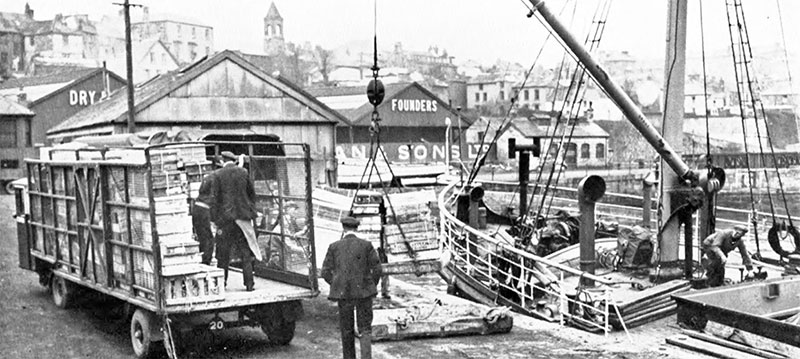
A 3-ton ‘birdcage’ trailer carrying flower boxes from the Isles of Scilly. Photograph published in Western Region Magazine May 1948
Carriage of flowers by the railway was still very much alive in 1960, as proved by the notice in the Great Western Trust collection. Sadly our current railways some 60 years or more later, have no such service to offer. “The past is a foreign country, they do things differently there”, wrote L P Hartley. Though flower traffic from the West Country still exists, it’s taken by road, of course!
TUESDAY 4 JULY
Larceny!
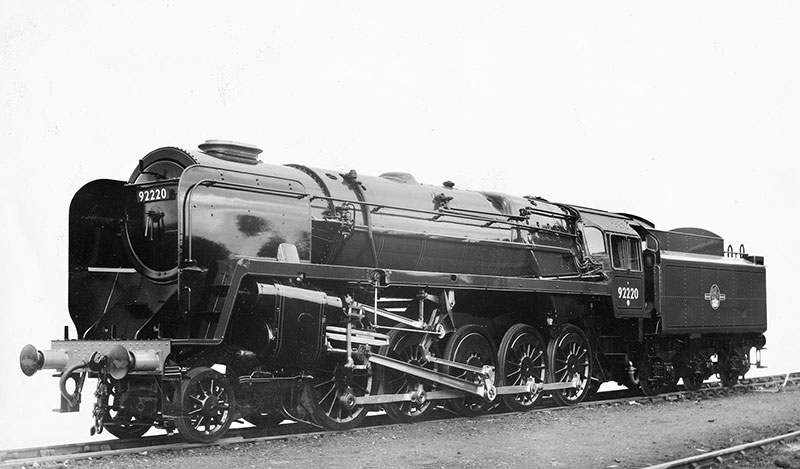
No. 92220 prior to her naming ceremony (note the absence of nameplates)
It is well known that 9F No 92220 Evening Star was the final steam locomotive built by British Railways. She was named at Swindon on 18 March 1960 by KWC Grand, former Assistant General Manager of the GWR and then General Manager of the Western Region. On completion, and before the naming ceremony, the loco was un-named, but what is little known is that she also became nameless at the end of her career.
The loco was always destined to become part of the National Collection and was withdrawn in March 1965 having suffered minor collision damage. However, a sheaf of paperwork recently donated to the Great Western Trust reveals a tale of theft, detection and recovery.
The story begins with a letter on the 1st April 1965 from the Chief Mechanical & Electrical Engineer’s Office, Paddington to the Divisional Manager, Birmingham, requesting that Evening Star’s nameplates be sent to the Stores Controller at Swindon.
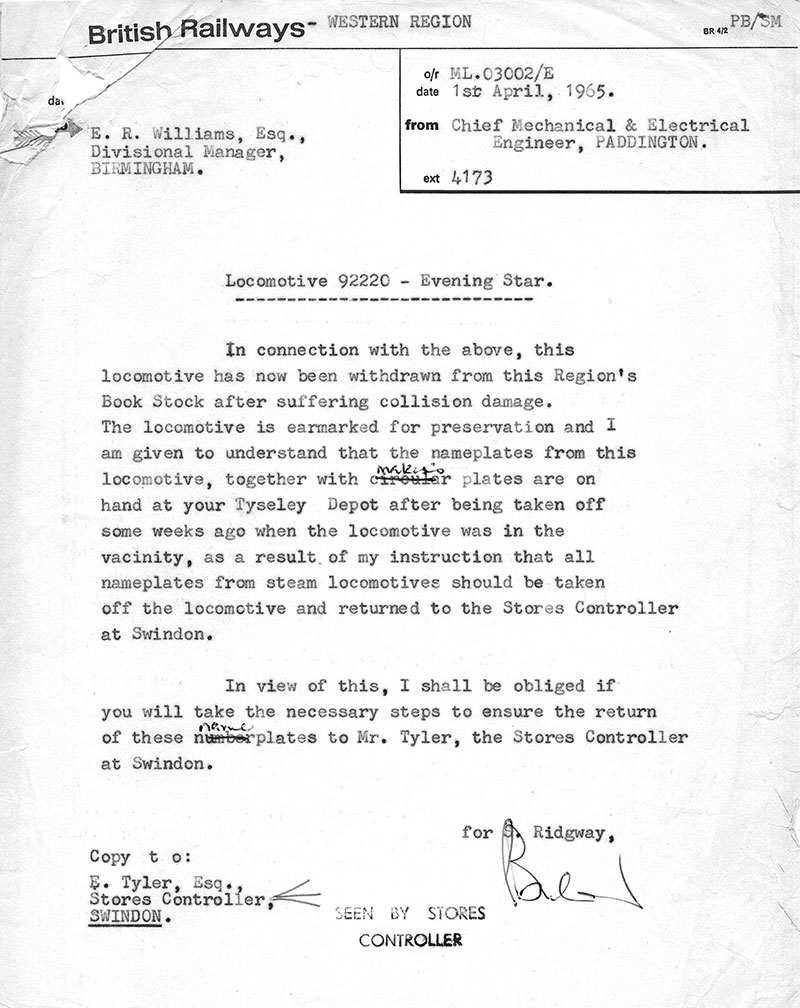
The search in Birmingham proved fruitless and so the next letter from Paddington went to the Divisional Manager, Cardiff, again to no avail.

By January 1966 it is evident that the plates are still missing, John Scholes, curator of the British Transport Museum at Clapham is aware and the matter is escalated to the police.
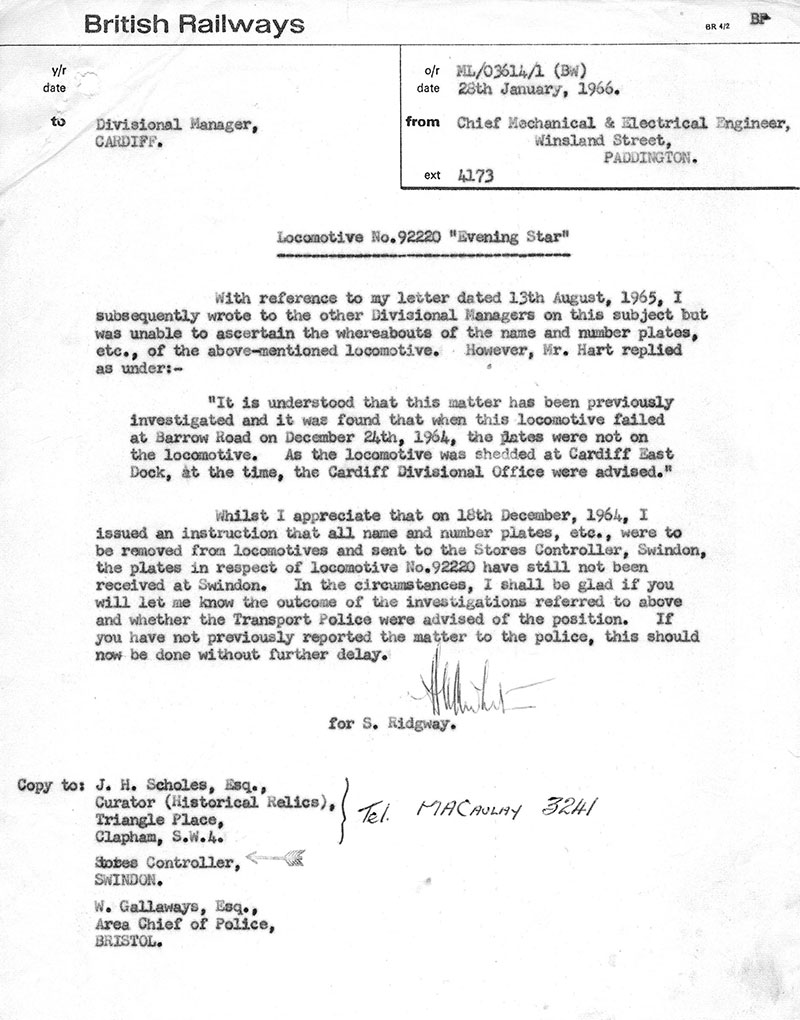
Ten months later in November 1966 a full British Transport Police investigation is under way.
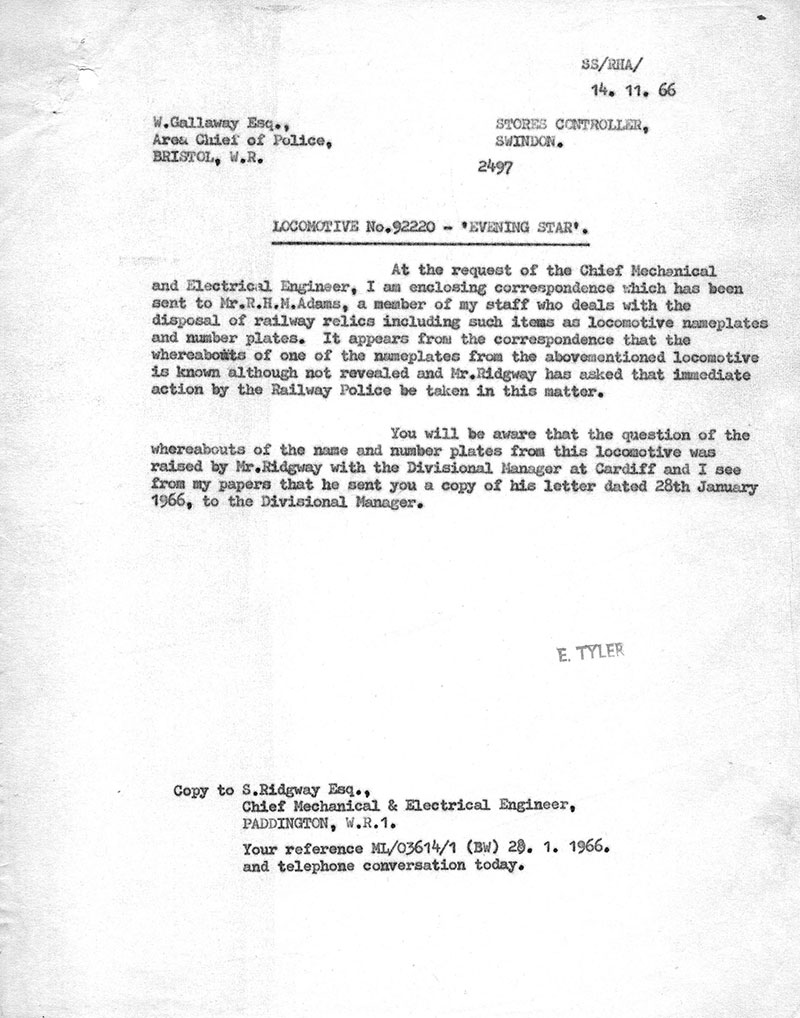
A week later we see that a successful conclusion has been reached. A nameplate (only one) has been recovered and prosecutions are pending. It is unclear what happened to the other plate or how it was found.
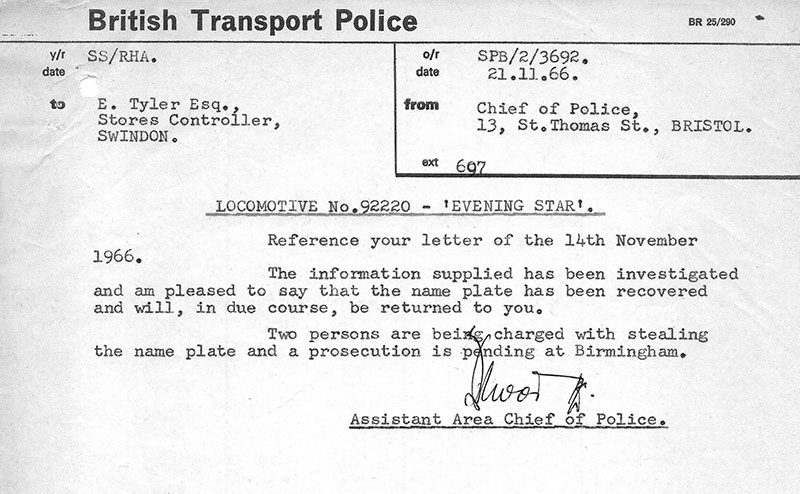
Finally, a rather poor quality carbon copy of a witness statement dated 28 November 1966 reveals in the handwritten note at the bottom that two drivers and two firemen were prosecuted for the theft and each fined £15 (approx £232 at current values). If they kept their jobs they were indeed fortunate. One wonders how the figure of £15 was arrived at – maybe because it was the sale price of a locomotive nameplate by BR at the time.
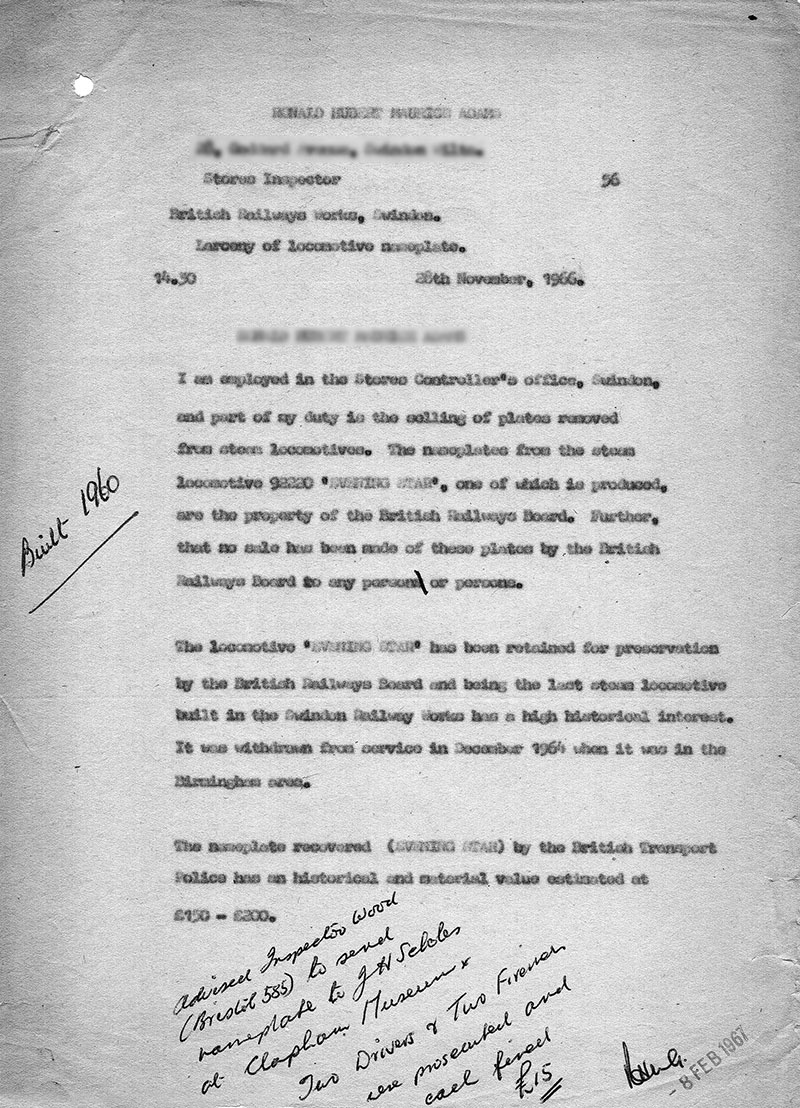
We will look again at this 1960s archive in future weeks.
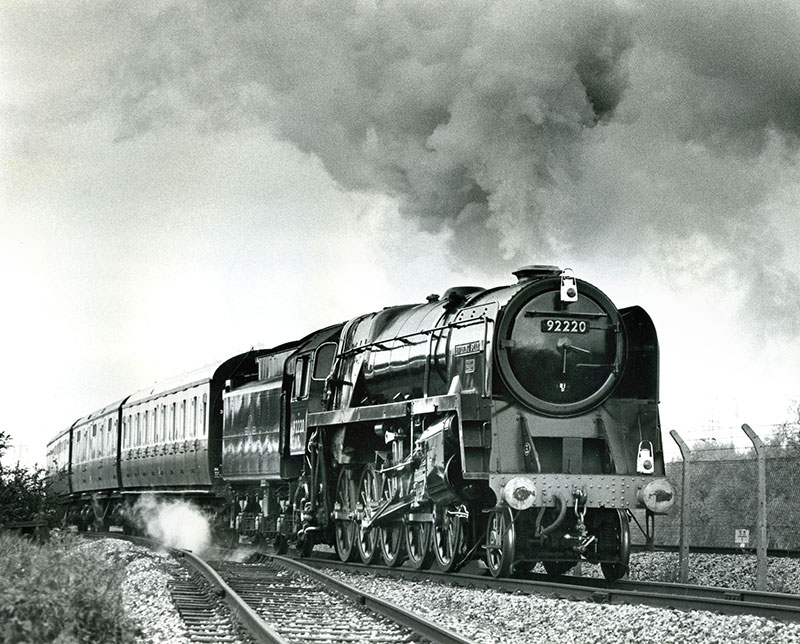
No 92220 Evening Star during her stay at Didcot in the early 1980s. Photograph taken on 26 October 1980 by Mark Yarwood
Didcot Railway Centre Newsletter
Stay up to date with events and what's going on at Didcot Railway Centre.
You may unsubscribe at any time. We do not share your data with 3rd parties.